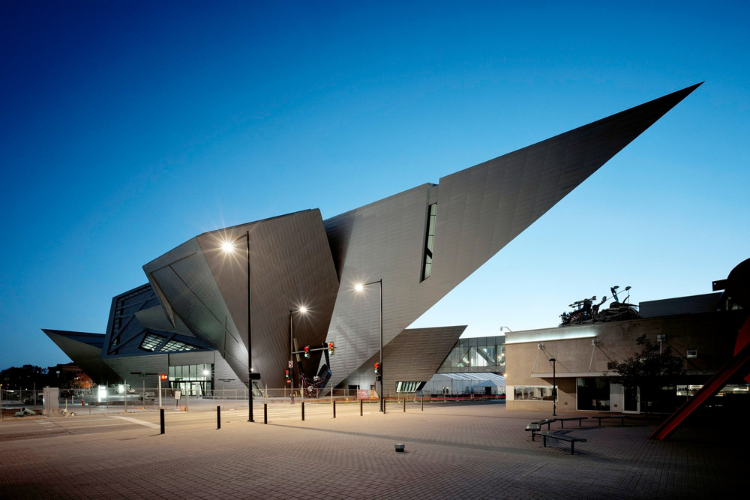The Denver Art Museum A Cultural Beacon in the Rockies
Explore the Denver Art Museum’s storied history and impressive collections, from its beginnings as the Denver Artists’ Club in 1893 to its current status as one of the largest and most significant art museums between Chicago and the West Coast. Known for its diverse global art collections, the museum is especially renowned for its Indigenous Arts of North America and Latin American Art collections. Join us as we delve into the museum’s architectural marvels, innovative programs, and significant expansions.

Introduction to the Denver Art Museum
The Denver Art Museum, originally founded in 1893 as the Denver Artists’ Club, has grown into one of the premier art institutions in the United States. Situated in Denver’s Civic Center, the museum boasts more than 70,000 works from various cultures and time periods. It is particularly celebrated for its Indigenous Arts of North America collection and its impressive Latin American Art and Art of the Ancient Americas. Over the years, the museum has expanded its reach and influence, continually evolving to serve its community and visitors better.

The Denver Artists' Club: Humble Beginnings
The Denver Art Museum began as the Denver Artists’ Club, established in 1893 with the mission to cultivate and promote interest in the arts. The club, founded by notable artists such as Henrietta Bromwell, Emma Richardson Cherry, and Anne Evans, initially held exhibitions in temporary locations, including City Hall and the Denver Museum of Natural History. In 1917, the club incorporated as the Denver Art Association, marking a significant step towards becoming a formal art institution.
Chappell House: A Permanent Home
In 1923, the Denver Art Association renamed itself the Denver Art Museum and opened galleries in the Chappell House, a grand mansion donated by the Delos A. Chappell family. This location provided the museum with much-needed exhibition and office space. The Chappell House became a cultural hub, particularly for women artists, and housed significant collections, including Anne Evans’ Native American basketry and Spanish Colonial art. The Chappell House served the museum until its demolition in 1970, paving the way for the construction of a new, modern facility.

Otto Bach and the Ponti Building
Under the leadership of Otto Karl Bach, who became director in 1944, the Denver Art Museum embarked on a period of significant growth and transformation. Bach envisioned a museum that represented the cultures of the world. He established several new departments, including Asian Art and New World Art, and initiated the planning for a consolidated museum building. This vision materialized with the opening of the Gio Ponti-designed North Building (now the Martin Building) in 1971, a unique structure clad in reflective glass tiles that became an architectural landmark.
The Frederic C. Hamilton Building: A Bold Expansion
In 2006, the museum expanded with the addition of the Frederic C. Hamilton Building, designed by architect Daniel Libeskind. This striking, angular structure, clad in titanium, provided additional space for the museum’s growing collections and special exhibitions. The Hamilton Building connected to the Ponti Building via a glassed-in walkway, creating a cohesive and dynamic museum campus. This expansion allowed the museum to host major exhibitions and significantly increased its capacity to engage with contemporary art.
Renovation and Expansion: The Sie Welcome Center
Recognizing the need to modernize and expand, the Denver Art Museum underwent a significant renovation and expansion project completed in 2021. This project included the complete remodeling of the Martin Building and the addition of the Anna and John J. Sie Welcome Center. The Sie Welcome Center, designed by Machado Silvetti and Fentress Architects, provides a welcoming entrance, visitor services, dining options, and additional exhibition and educational spaces. This expansion has enhanced the museum’s ability to serve its 800,000 annual visitors and accommodate its extensive collections.
Innovative Programs: Free for Kids and Community Engagement
In 2015, the Denver Art Museum launched the Free for Kids program, providing free admission to all youth ages 18 and under. This initiative, supported by museum trustee Scott Reiman and corporate sponsors, reflects the museum’s commitment to accessibility and art education for young people. The museum’s Learning & Engagement Center, located in the Martin Building, offers innovative programming that engages visitors of all ages, fostering a deeper connection with art and culture.
Today: A Cultural Anchor in Denver
Today, the Denver Art Museum stands as a vibrant cultural anchor in Denver, with a staff of approximately 375, an annual budget of around $30 million, and an endowment exceeding $150 million. The museum continues to attract global attention with its diverse exhibitions, educational programs, and architectural innovations. As it enters its next chapter, the Denver Art Museum remains dedicated to enriching the cultural landscape of Denver and beyond, offering visitors an unparalleled art experience.
Latest Posts from Bla Bla City Tours
Stay updated with the newest adventures, tips, and stories from Bla Bla City Tours. Discover the best of Denver, Colorado, and beyond through our latest blog posts.



